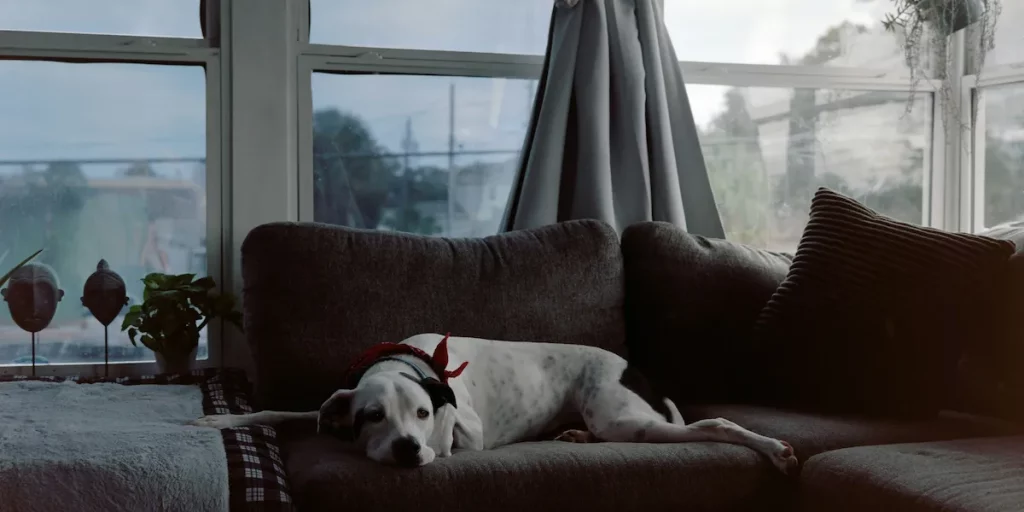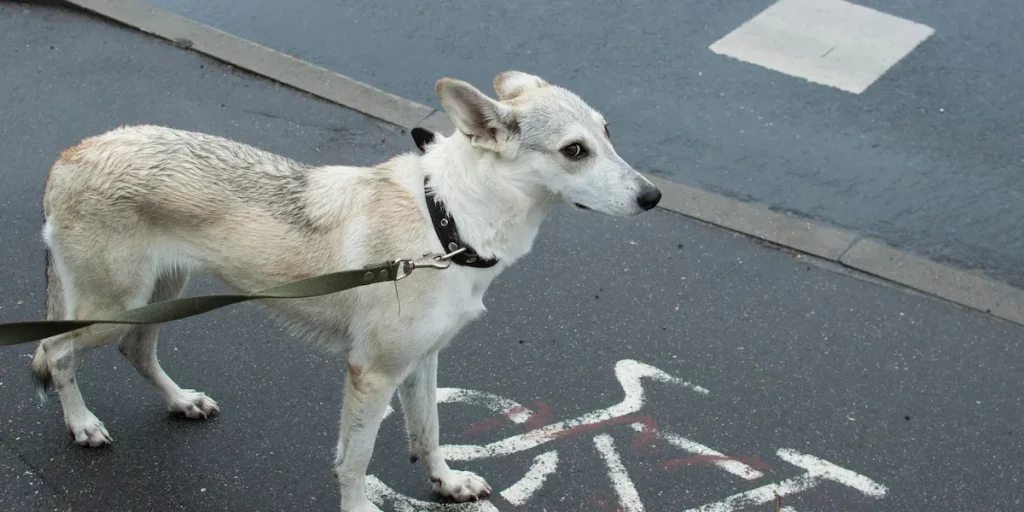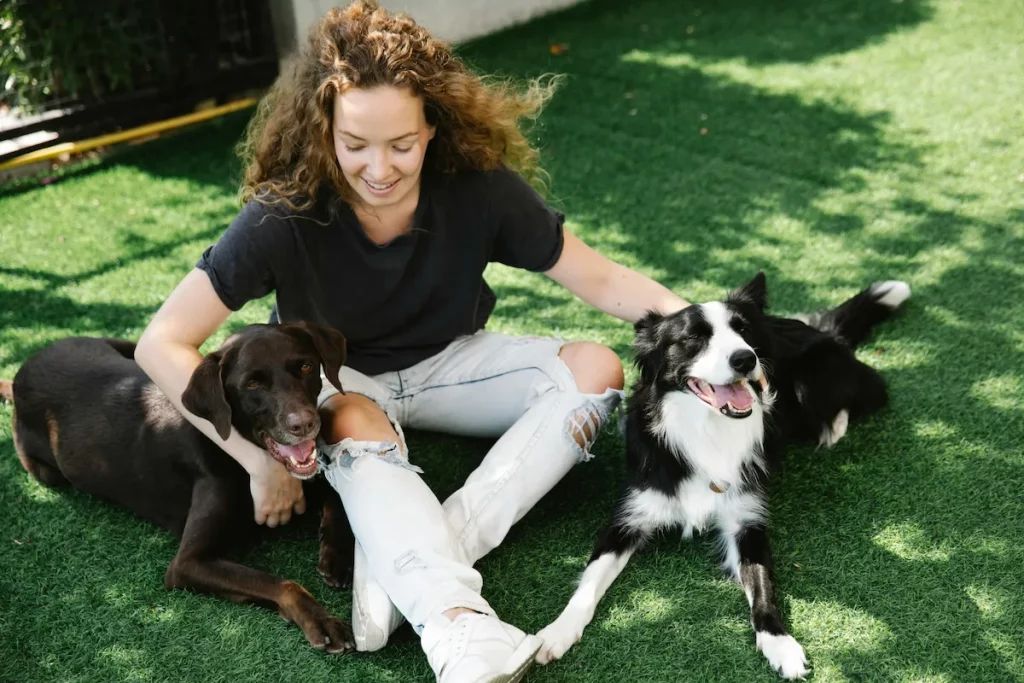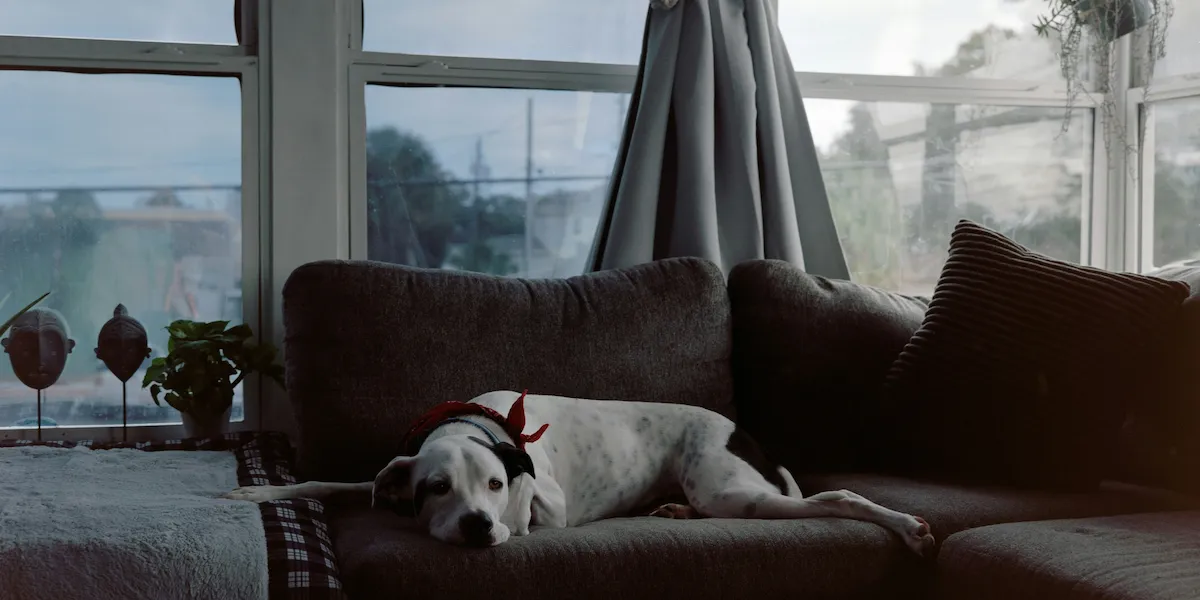
Introduction
Ever noticed your dog acting a little “off” — pacing around, licking their paws, or hiding under furniture — and wondered if it could be one of the early signs of anxiety in dogs?
Dogs feel anxiety just like people do, but their signs are often easy to miss if you don’t know what to watch for.
Spotting the early signs of anxiety in dogs can make a huge difference in your pet’s happiness, behavior, and long-term well-being. Studies have shown that dogs experience anxiety disorders similar to humans (The European Animal Research Association (EARA)).
In this guide, I’ll walk you through 10 subtle signs of anxiety in dogs, including a few that even experienced owners sometimes miss.
Why Early Detection of Signs of Anxiety in Dogs Matters
Catching anxiety early can help prevent bigger problems like destructive behavior, chronic stress, or aggression down the line.
- 🐾 It protects your dog’s emotional well-being.
- 🐾 It helps you respond with calm, positive support.
- 🐾 It builds a stronger, more trusting bond between you and your dog.
Recognizing early anxiety symptoms allows you to act before stress behaviors escalate.

10 Early Signs of Anxiety in Dogs
1. Excessive Licking or Chewing
Dogs sometimes self-soothe by licking or chewing excessively.
If your dog is constantly licking their paws, gnawing on furniture, or chewing their own fur, anxiety could be the cause, not boredom or bad behavior.
2. Panting or Drooling More Than Usual
Sure, dogs pant after a walk — but if your dog is panting heavily, trembling, or drooling a lot while resting at home, it might be a hidden sign of stress.
3. Restlessness and Pacing
An anxious dog often can’t settle down.
If you notice your dog pacing back and forth through the house, especially before you leave or during storms, it could be their way of coping with nervous energy.
4. Sudden Destructive Behavior
Destruction isn’t always about mischief — sometimes it’s fear.
If your calm dog suddenly starts chewing shoes, shredding pillows, or digging at doors, anxiety could be behind it. Destructive behavior can often be triggered by environmental changes or separation issues. Learn about common dog anxiety triggers here.
5. Frequent Whining or Barking
Excessive vocalization — especially whining — can be a dog’s way of asking for help.
They might be feeling anxious about separation, loud noises, or changes in the household routine.
6. Avoidance or Hiding
Dogs that feel overwhelmed sometimes disappear quietly.
If your dog hides under the bed, slips into closets, or retreats behind furniture more often, it’s a clue that they’re trying to find a safe space.
7. Changes in Eating Habits
Loss of appetite, sudden pickiness, or even food refusal could be a subtle sign your dog is stressed.
It’s one of the less obvious symptoms, but definitely one to watch for.
8. Aggression or Growling When Approached
Even gentle dogs can growl, snap, or show their teeth when they feel cornered by anxiety.
This behavior usually means they’re scared, not angry — it’s a warning, not an attack.
9. Trembling or Shaking
If you see your dog trembling without being cold or sick, it could be stress.
Thunderstorms, fireworks, or even new environments can trigger visible shivering.
10. Frequent Accidents Indoors (Even if House-Trained)
A dog who suddenly starts peeing indoors, despite years of good house training, might be dealing with emotional turmoil.
Anxiety can upset even the best bathroom habits.

What to Do If You Spot These Signs
Spotting the early signs of anxiety is the first step — but what you do next is even more important.
- 🛏️ Create a safe zone: Give your dog a quiet place to retreat where they won’t be disturbed. You can find more tips on calming your home environment for anxious pets from the Garston Veterinary Group.
- 🤲 Stay calm yourself: Dogs mirror your emotions. Your calmness helps them settle.
- 🎾 Add structure: Consistent routines (walks, feeding times) create predictability, which eases stress.
- 🐶 Reward calm behavior: Offer treats and praise when your dog remains calm.
- 🩺 Seek professional help: If anxiety is serious or worsening, talk to your veterinarian or a certified behaviorist. You can also find helpful advice on recognizing and treating dog anxiety from the American Veterinary Medical Association (AVMA).
Small, thoughtful changes often make a huge difference over time. For a deeper guide on gentle techniques, check out our article on how to calm an anxious dog naturally.
Conclusion
Understanding the early signs of anxiety in dogs helps you protect your furry friend’s emotional health before stress takes over.
Stay tuned for more practical advice on calming anxious dogs, natural remedies that really work, and building a life of security and happiness for your four-legged family member. 🐾

FAQs About Dog Anxiety
What Are the Early Signs of Anxiety in Dogs?
The earliest signs often include excessive licking, whining, pacing, and hiding. Some dogs may also show appetite changes or subtle body language like tucked tails and flattened ears.
Can Dogs Develop Anxiety Suddenly?
Yes. Dogs can develop anxiety later in life due to trauma, aging, health issues, environmental changes, or even the loss of a family member.
How to Calm an Anxious Dog Naturally?
Providing a quiet, safe environment, using calming aids like pheromone diffusers, sticking to routines, and offering mental stimulation with toys can naturally ease anxiety without medication.
When Should I See a Veterinarian for My Dog’s Anxiety?
If your dog’s anxiety interferes with daily life (e.g., frequent accidents, aggression, destructive behavior) or worsens over time, it’s a good idea to consult a veterinarian.
📣 We’d Love to Hear from You!
Has your dog ever shown signs of anxiety?
What did you notice first, and how did you help them feel better?
🐾 Share your experience in the comments below — your story might help another dog owner too!
If you find this article helpful, share it with friends or family who love dogs as much as you do. 💛
Written by Vaughn Andrews — Founder of Gentle Dog Care
Helping anxious and aging dogs live happier lives with natural care, gentle routines, and a whole lot of love.


3 thoughts on “10 Early Signs of Anxiety in Dogs (That Most Owners Miss)”